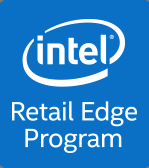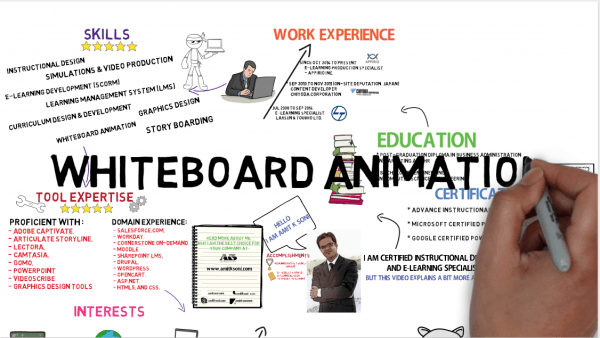Add Another Dimension To Training With Animation
While we all may agree that an eLearning program’s fundamental goal is to impart information, there are numerous ways to achieve that goal. Additional requirements for online training success include knowing the audience and understanding their specific needs, from both a branding and a training standpoint.
Only when those goals and objectives are clearly defined should you begin to formulate a plan to present specific information in a way that will interest, engage, and stimulate your audience.
Previously, we outlined several distinctive ways to encourage your target audience to engage with your eLearning program. Some methods include message boards, quick polls, competitions, and promotions.
Now let's talk about adding animation to the mix.
Creativity Sparks Learning
Learning, both as a child and as an adult, should be memorable. When presented in the right way, corporate training sticks with you and leads to mastery of the topic, increased confidence, and more expertise in a given area. These results are critical in training presented through an eLearning program; otherwise, the effort is wasted.
The truth is that no training experience can be effective if it's dull. And, because individuals learn in different ways, any tools we use to promote engagement, enthusiasm, and understanding are worthwhile. We're always looking for new and better ways to make learning exciting and enjoyable. Using animation has proven to be one of the most effective ways of achieving both.
Megan Rojas, Principal at Let It Roar Creative, has produced animated characters and the worlds in which they exist for our Program. She refers to the use of animation in eLearning as "edutainment," or education entertainment, a term that we appreciate and endorse.
As Rojas explains, animation delivers information in an entertaining way and is geared toward what appeals to individuals today and how they process information. By wrapping information in a story, you begin to create an emotional attachment to something. Creating an animated world is what draws people in, gets them engaged, and at the same time, communicates critical information about your product, or service, or topic area.
Why Animation Works
Early on in our Program, we used animation through a character who came out of a game to talk about the benefits of technology. Our animation efforts have evolved through the years, and now it’s an integral part of our design and training delivery.
Animation is what people are most familiar with today, according to Rojas. Characters, particularly familiar ones, allow you to do more theming of a training campaign delivered through an eLearning platform.
We can create a thematic experience that ties the background, layout, and page appearance into the character's world. Rojas explains that a strong story element not only keeps the audience engaged, but it is also an excellent tool for gaining engagement.
In work environments with a lot of turnover, animation can help to retain long-term employees because they become invested in the story. New elements are revealed to keep participants returning to the Program. New employees become intrigued by the story and characters, generating interest, excitement, and engagement.
Animation can make the brand more approachable. When you want to interject fun, sarcasm, and hilarity into your training material, it’s easier to deliver through an animated character than a “talking head.” We often pair animation with a quiz. We can track views, gauge training effectiveness, and analyze quiz completions.
Printed materials incorporating the characters can reinforce key messaging, reveal codes for prizes, and more. Familiar characters can be immediately recognizable personalities of your eLearning program and generate excitement that is sometimes difficult to produce in other ways.
The Nuts And Bolts Of Animation
An exciting aspect, according to Rojas, is that most any eLearning platform can include animation. It is merely a video file that easily inserts into an eLearning module.
An animator will need to know your training's purpose, including key messaging, Calls-To-Action, and desired outcomes. Discuss how animation can deliver the messaging and desired result in an engaging and entertaining way.
Animation does require a full measure of creativity. Rojas gave a brief explanation of the steps involved and the information needed in the animation process. Some of these include:
- Create the world, the characters, and add personality through a creative writer.
- Create the material the audience needs to learn through a technical writer.
- Produce a voiceover of the script.
- Set up scouting shots of characters and assets (backgrounds, setting elements, props, etc.)
- Create an animatic or rough edit by merging the audio recording and scouting shots.
- Generate the motion capture of body movement and facial expressions.
- Assemble and render out characters.
- Deliver the video file for uploading to the eLearning platform.
Today's animation can be as simple or complex as needed. We have had great success with our Program’s recurring characters Hack & Slash, both as animated characters and in 3D still-shot formats.

This dynamic duo helps us generate more engagement, excitement, and entertainment while delivering critical information about Intel® products to our retail partners and their sales associates.
There is no doubt about the overall value animation provides when used as a training and teaching tool.
Build "Comeback" With Animation
Stories are vital to creating engaging content and training materials. Animated characters can uniquely help tell your stories, allowing the audience to enter a visually exciting world and become an integral part of that new environment. The characters become almost like friends, and you’ll find that different participants will relate to them in interesting ways.
Animation can build loyalty and generate a new level of engagement, describes Rojas. Participants come back for the training, but they also return because they want to keep up with the story. It is an effective tool that broadens the scope from only delivering training material to serving other purposes such as recruiting new participants to your program or driving engagement during critical sales periods.
Animation is yet another way we strive to breathe new life into the core pillars of our Program. It helps on all levels to promote learning, encourage communication, build a community, and deliver unique rewards for participating. Plus, it is one of the easiest ways to add the element of fun to training. What eLearning program couldn’t use that?
Notices and Disclaimers
© Intel Corporation. Intel, the Intel logo, and other Intel marks are trademarks of Intel Corporation or its subsidiaries. Other names and brands may be claimed as the property of others.










